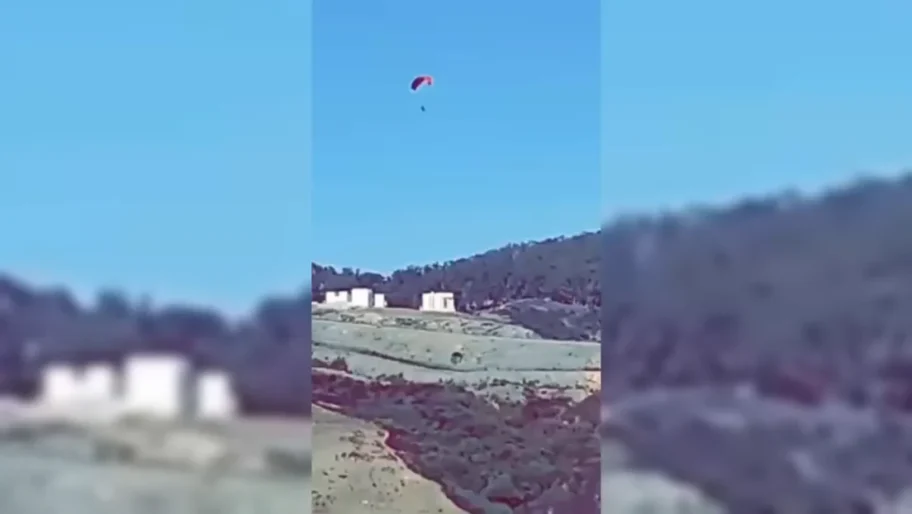Marrakech – In an unprecedented border crossing method, a young man successfully used a paraglider to enter Spain’s North African enclave of Ceuta from Morocco.
The incident, captured on video and widely shared on social media, occurred last Friday when the migrant flew over Yebel Musa (Jbel Moussa) mountain before landing in Ceuta’s Sidi Ibrahim area.
According to local Spanish media, the migrant – described as a young sub-Saharan man in his early twenties – abandoned his pink paraglider in the undergrowth after landing and managed to evade Spanish authorities.
The Guardia Civil (Spanish Civil Guard) conducted an exhaustive search of the area after security cameras spotted the paraglider, but only found the abandoned equipment.
The young man reportedly had no injuries, suggesting he was experienced in operating paragliding equipment. He is currently in Ceuta awaiting potential transfer to mainland Spain as part of the regular relocation program to reduce overcrowding at the CETI reception center.
This aerial crossing marks the first of its kind between Morocco and Ceuta. A Guardia Civil source indicated they do not expect many migrants to attempt similar crossings, noting that paragliding “is expensive and risky and something you need to be experienced in.”
Migrants typically attempt to enter Ceuta by swimming or by climbing the heavily fortified border fence – approximately 32 feet high and topped with razor wire.
In a separate case, a Somali migrant successfully swam to Ceuta from the Moroccan town of Beliones (Belyounech).
Spanish authorities revealed that 1,452 undocumented migrants entered Ceuta by land between January and July 2025, representing a 7.2% increase from the previous year.
The border remains under significant migratory pressure despite extensive security measures, including electronic sensors and high-intensity lights.
The Civil Guard reportedly became aware of potential aerial crossing attempts this summer after videos appeared on TikTok showing sub-Saharan migrants discussing paragliding equipment as a possible means of entry.
The incident has added a new dimension to the ongoing migration challenges at this critical border point between Morocco and the Spanish-occupied territory.
Read also: New Trend in Spain: Moroccan Parents Leave Children in Bilbao for Care Services
